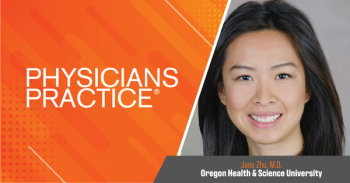
PAs Clarify Practice Role Amid AMA Ruling
A new resolution from the AMA opposed independent practice by PAs, which is not something the profession is seeking.
I am just returning from the AMA Interim House of Delegates (HOD) 2017 in Honolulu, Hawaii. As a veteran observer of the AMA HOD (having attended ten annual and interim meetings of this physician policy making body), it never ceases to amaze me at the depth and breadth of the policy that the AMA HOD considers.
There was detailed, voluminous and passionate testimony about too many issues to mention, but here is just a sampling of the issues discussed.
One was related to Immigration and Customs Enforcement (ICE) and their actions in healthcare facilities involving patients under the care of physicians. There was a lot of passionate testimony, and a strong, nearly unanimous statement by the HOD to protect the patients under their care and make the health and well-being of the patient the priority.
Another issue that generated a lot of testimony and supportive debate was the exorbitant cost of insulin, and its deadly effect on the care of people with diabetes. This issue was referred to the Board of Directors for development of an action plan with report back to the Annual Meeting in seven months.
Of particular interest to me as American Academy of PAs' (AAPA) Liaison to the AMA were resolutions related to "independent practice." The first was a resolution to convene a task force to develop a cohesive strategy to deal with a movement by advanced practice nurses (APRN) to standardize scope of practice between states outside the control of local regulatory boards. This passed after being amended to include all non-physician providers.
A second resolution simply opposed "independent" practice by PAs. This passed on the consent agenda. This resolution was prompted by a recent policy on
The OTP policy, included in our new
The AMA resolution assumes that the PA profession seeks independent practice -without collaborating with physicians. That is not the case. It's not who we are or what we do. Under an OTP framework, PAs will still be legally and ethically obligated to consult with and refer patients to physicians based on the patient's condition, the standard of care and the PA's education and experience. If they don't, the PA will be subject to disciplinary action by the state regulatory board, just as any other medical provider would be.
PAs have made clear in the OTP policy that we want to preserve the present model of team practice. But as more physicians and PAs are practicing in large groups, hospitals or health care systems, state requirements for PAs to have "supervisory agreements" are increasingly difficult to manage and put all providers involved at risk of disciplinary action for administrative infractions that are unrelated to patient care.
PAs believe in team practice. There is a tremendous shortage and maldistribution of providers in the healthcare system. With removal of the unnecessary administrative barriers to the full utilization of PAs, PAs will be a more effective solution to problems in the healthcare system and better partners with physicians.
Newsletter
Optimize your practice with the Physicians Practice newsletter, offering management pearls, leadership tips, and business strategies tailored for practice administrators and physicians of any specialty.








